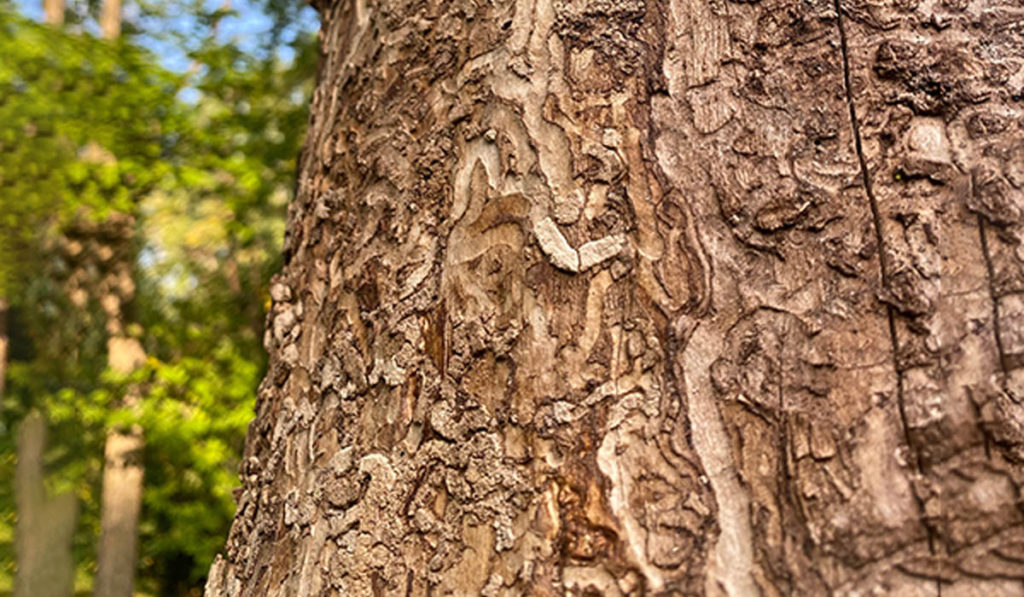The Emerald Ash Borer (EAB) is an invasive beetle native to Asia that has become a significant hazard to North American ash trees. Scientifically known as Agrilus planipennis, it was first detected in Michigan and has since spread to numerous states and provinces across the continent. Major concerns have been raised regarding its destructive effect since ash trees have little natural resistance to the beetle.
The EAB may be small, but its impact is devastating. This tiny pest has caused millions of dollars in damages and has destroyed vast forested areas in the United States. It wreaks havoc without immediate visibility, allowing it to go unnoticed for years. It has also affected the baseball industry, as many bats are made from ash wood.
Efforts to control and manage the spread of EAB involve various strategies, including early detection, quarantine measures, public awareness campaigns, and treatment options. This blog post will discuss why summer treatment is essential and share the right methods for treating EAB infestations during this period.
The Life Cycle of Emerald Ash Borer During the Summer
During the summer, the EAB undergoes its adult stage as it emerges from infested ash trees. This developmental phase usually occurs from late May to early August, with variations based on regional and environmental factors. Adult EAB beetles are highly active flyers, seeking out potential mates and suitable ash trees to lay their eggs on.
The adult Emerald Ash Borer is attracted to healthy ash trees to lay their eggs in the crevices and bark cracks. This behavior increases the risk of infestation and highlights the importance of treating them to interrupt the EAB’s reproductive cycle. After hatching, the larvae will begin to feed on the inner bark. This feeding activity disrupts the tree’s vascular system, preventing the flow of water and nutrients.
EAB Treatment Options for the Summer
Several effective options are available for EAB infestations in the summer, particularly in June and July. These strategies aim to interrupt the pest’s life cycle, reduce its population, and protect ash trees. Here are some of the most common summer treatments:
Biological Control
Biological control is a pest management technique employing natural enemies to suppress or manage populations of harmful organisms like pests or invasive species. The most common control agents for EAB are parasitoid wasps, specifically species belonging to the genera Tetrastichus and Oobius. These tiny insects are natural EAB predators adapted to parasitize eggs and larvae. This is not a highly effective or recommended approach.
Soil Drenches
Soil drenches involve the application of systemic insecticides to the soil around the ash tree’s base. This insecticide solution is diluted with water and poured directly onto the ground. The tree’s roots then absorb the treatment, transporting it upward and distributing it throughout the canopy. This method ensures that the insecticides travel within the tree, combating EAB larvae for longer. This method is only effective for tree smaller than 6” in a diameter and does pose a risk for chemical run off in the soil.
Trunk Injection
Trunk injection works by directly injecting insecticides into the trunk of ash trees. At Well Rooted Gardens, we use the Arbor Systems method, where we inject a patented solution into the tree’s vascular tissue. This system is safer for the tree than many other systems that use high volume and high pressure which can burst vascular strands. We also do not drill holes into the heartwood like many other systems requires. This direct injection system ensures precise insecticide delivery into the tree’s cambium layer, providing two years of EAB treatment and protection.
Invest in Quality EAB Treatment With Well Rooted Gardens!
When you choose Well Rooted Gardens, you are investing in the expertise of our professionals. Our team is well-trained in the latest EAB management techniques and stays up to date with industry advancements and best practices. We also deeply understand the EAB life cycle and treatment options, allowing us to tailor our solutions to the specific needs of your trees such as tree trimming, tree removal and much more.
Don’t settle for subpar solutions when it comes to EAB control. Call us at 402-800-7389 now!

